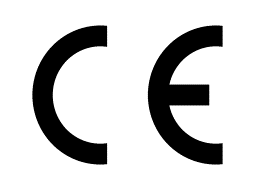 General General
Electro-Magnetic
Compatibility means:
the ability of
electric and electronic equipment, installations and systems to mutually
operate in the same environment without causing or receiving
interference.
The
importance of EMC is obvious. For example, think about the
electro-magnetic interference that can be caused by electric generation
and distribution systems, causing disturbances in sensitive electronic
equipment used for telecommunication and wireless-communication.
As
a manufacturer or importer, it is essential to know whether your
electric appliance is compatible with other electric equipment. EMC is a
part of the performance of your product.
EU-directive
89/336, hereinafter referred to as the EMC-directive, was issued in
order to obtain regulatory rules.
Range of
application
The
EMC-directive includes all electric and electronic equipment as well as
equipment and systems that contain electric and/or electronic components
insofar as various aspects could cause electromagnetic interference or
the operation thereof could be affected by this interference. The above
applies, in fact, to all equipment in which use is made of electric
energy, from battery-operated products to high-voltage installations.
The
EMC-directive is not applicable to products for which separate
directives exist with their own EMC criteria. Exceptions to the
directive at the present time are:
-
medical devices (EU-directive 90/385/EC,
93/42/EEC and 98/79/EC),
-
the
emission aspect of motor vehicles (covered by EU-directive
72/245/EC),
-
non-automatic weighing instruments (EU-directive
90/384/EC),
-
tractors,
-
self-built
equipment of amateur radio transmitters.
Technical
requirements
The
EMC-directive simultaneously regulates the emission from electronic
equipment and the degree of insusceptibility to electromagnetic
interference in the immediate vicinity of this equipment. In other
words, products that fall under this directive may not cause
impedimentary interference in other equipment and at the same time must
be sufficiently immune to interference from other sources.
The
criterion that equipment must be constructed in such a way that it
neither causes interference in other devices nor can itself be affected
by interference is referred to as an 'essential requirement'.
Conformity
Assessment Procedures
In
order to indicate that a product complies with the essential
requirements of the EMC-directive, a correlation can be made with the
technical standards. There are two separate methods for the selection of
standards and criteria that can be used to demonstrate compliance with
the directive:
-
compliance
with the harmonized European EMC Standards (EN standards);
-
compliance
with specified requirements, if there are no standards for the
product or if the standards cannot be fully followed.
EN standards:
In
principle Module A applies: the manufacturer verifies compliance of the
product-design with the harmonized EN-standards and provides evidence of
this compliance in the "Technical Construction File". For
products with the CE marking a "Declaration of Conformity"
shall be made.
No EN
standards, or incomplete use:
In
principle Module Aa applies: the manufacturer compiles a "Technical
Construction File" for the product. This file must contain the
following information:
-
a
list of the standards that are in fact employed or those that are
partially employed;
-
a
list of the measures taken in order to comply with the EMC
requirements for which no standards are employed;
-
technical
report or certificate by an authorized organization ("Competent
Body" in the scope of the EMC-directive), in which it is stated
that as a result of the measures taken there is compliance with the
essential safety requirements.
For products
with the CE marking a "Declaration of Conformity" shall be
made.
When did the
directive come into force?
In
1992 an EU-Directive for Electromagnetic Compatibility (89/336/EC), came
into force. On the basis of this EMC-directive, only those products that
comply with the essential requirements will be allowed on the market.
The
EMC-Directive has had a transition period that was effective until
December 31st, 1995. During this transition period manufacturers were
allowed to choose between compliance with the EMC-Directive or
conformity with the prevailing national legislation as that applied on
30 June 1992 in the individual EU member states.
CEBEC and
the EMC Directive
CEBEC
has some 60 years of experience in the field of testing and
certification. The CEBEC laboratories are equipped with all the
necessary facilities for EMC tests. Not only can we perform every
requisite EMC measurement for you, we can also conduct on-site
measurements.
The
Belgian government has appointed CEBEC as Competent Body (authorized
organization). This means that CEBEC can assist you in complying with
the EMC-directive even in cases where no EN standards are available for
your product.
Information
For
further information please contact:
CEBEC
Avenue. Fr. Van Kalken 9A, b. 1
B-1070 Brussels (Belgium)
Phone: +32 2 556 00 20
Fax: +32 2 556 00 36
CEBEC provides market access
|
